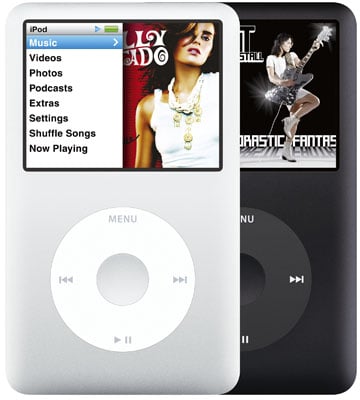
That’s right, music piracy. Truly, I dance upon the cutting edge of blogging.
I think we can all agree that in modern society music has become a commodity. To a large degree the music business has become one of the strongest promoters of consumerism. The music video in particular has played an obvious role in shaping the connection between the creation of music and the marketing of other commodities. To be sure, a music video promotes buying a CD or a track on an online music store. In most circumstances however, you can only sell one copy of the song to any given person. What’s more, if several music videos are made for songs on the same album, the videos may be redundant in terms of direct marketing. The real commercial value of a music video is in promoting an image or a lifestyle, reinforcing the sign-values associated with our commodities. The Beyonce “Upgrade You” video is one obvious example.
From the prevalence of music marketing, we might be led to believe that the music industry is doing well, when in fact the opposite is true. What is the cause of the industry’s ill fortunes? Well, if you ask them the answer is music piracy. The music companies may be decrepit dinosaurs struggling to deal with new circumstances, and I see no reason to be sympathetic for their failed business models, but it can hardly be denied that music piracy has had a profound impact on the way we consume music.
In the “old days” we bought music in a package. This package was physical: a plastic box covered in plastic wrap, and some incredibly annoying stickers. The box contained a round plastic disc and a small booklet containing such things as copyright information, lyrics, and artwork. The music itself though was also packaged immaterially in the format of the Album. When you bought music you bought a medium containing x songs in a particular grouping and order. Older generations of music media such as the vinyl record and the cassette tape made listening to a particular song in isolation even harder. Now we buy files, an abstract series of 1’s and 0’s that we can replicate, alter, and transmit with the greatest of ease. Transferring music recordings, with or without the legal right to do so, is so easy that quite literally a child could do it.
Strangely, the ease of acquiring music makes us both more and less connected to the music we listen to. We are more connected because we have more freedom of choice in selecting what songs we choose to hear. We don’t need to get 12 songs in a package if we just want 2. We are freed from the arbitrary bundling of the album (although with this freedom we may sacrifice a cohesive artistic vision in some cases). Through online discussion and distribution of music we are more easily exposed to interesting artists without major mainstream backing, and we are able to acquire hard-to-find music from anywhere that’s connected to the internet. We become more active consumers of music than previous listeners who were more beholden to the tastemakers and corporate interests that control the airwaves. On the other hand, the ridiculous ease of accumulating music can also make us uninvolved in our music selection. It is not uncommon for people to have downloaded tens of thousands of songs, often hundreds at a time in bulk downloads, with little to no familiarity with what they’ve acquired. This may be a daring or radical way to sample lots of music, but a personal music library is at risk of becoming a massive spreadsheet of extremely thorough but rarely heard music sitting as idle data on an infinite number of hard drives.
Technology has advanced to the point where we are capable of engaging with the wide world of music in ways never before seen. Yet, we find ourselves still downloading the hit single, the Soulja Boy’s of the world, just as the marketers tell us to. But even while we conform to these wishes, we ironically follow the market-driven urge to consume by denying the market our capital. Unrestrained by economics, but compelled forwards by our consumption-based perception of culture, we consume music more and more ravenously, with no barrier to prevent us from ripping one more track, one more album, one more Torrent of an entire discography. The internet has blown the door of the selective process off its hinges, and we take the opportunity by renouncing selection and consuming all that we can.


.jpg)

